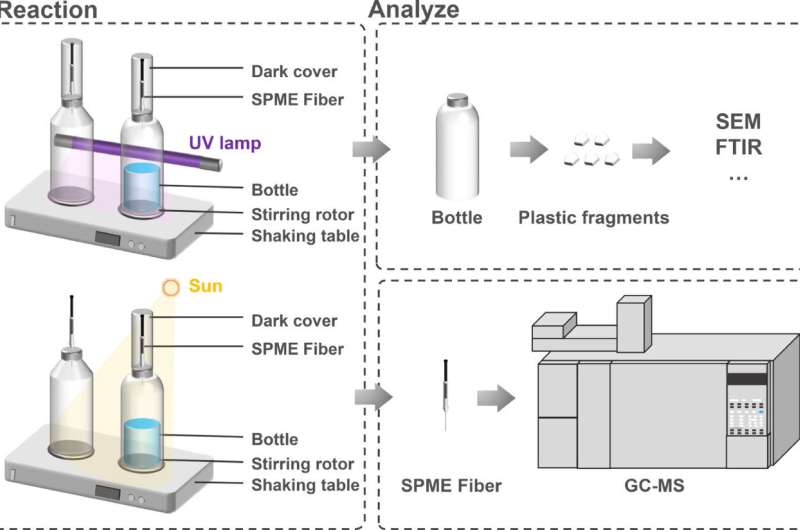This article has been reviewed according to Science X's editorial process and policies. Editors have highlighted the following attributes while ensuring the content's credibility:
fact-checked
proofread
Sunlight and plastic: A risky combination for bottled water safety

Plastic water bottles are ubiquitous due to their convenience, yet they harbor potential risks. Sunlight exposure can lead these containers to degrade and emit volatile organic compounds (VOCs), which are potentially detrimental to human health. The booming bottled water market underscores the urgency for safer alternatives. In response to these concerns, there is a pressing need for in-depth research into more secure materials and production methods for water containers.
New research by the Guangdong Key Laboratory of Environmental Pollution and Health, Jinan University, and published in Eco-Environment & Health, provides fresh insights into how sunlight can transform plastic water bottles into sources of air pollution.
The research analyzed the VOCs released from six types of plastic water bottles subjected to UV-A and sunlight. Results showed that all tested bottles emitted a complex mixture of alkanes, alkenes, alcohols, aldehydes, and acids, with significant variations in VOC composition and concentration among the bottles.
Notably, highly toxic VOCs, including carcinogens like n-hexadecane, were identified, highlighting serious health risks. Prolonged exposure scenarios indicated an increased concentration of VOCs, pointing to a growing cumulative risk.
Dr. Huase Ou, the lead researcher, remarked, "Our findings provide compelling evidence that plastic bottles, when exposed to sunlight, can release toxic compounds that pose health risks. Consumers need to be aware of these risks, especially in environments where bottled water is exposed to sunlight for prolonged periods."
This study not only casts light on the chemical stability of polyethylene terephthalate (PET) bottles but also carries significant implications for public health and safety regulations. Understanding the conditions under which these VOCs are released can guide the improvement of manufacturing practices and material selection for bottled water containers.
Furthermore, it underscores the need for enhanced consumer awareness and stricter industry regulations to reduce exposure to these potentially harmful compounds.
More information: Ruijuan Liu et al, Characterizing the photodegradation-induced release of volatile organic compounds from bottled water containers, Eco-Environment & Health (2024). DOI: 10.1016/j.eehl.2024.01.005
Provided by TranSpread





















